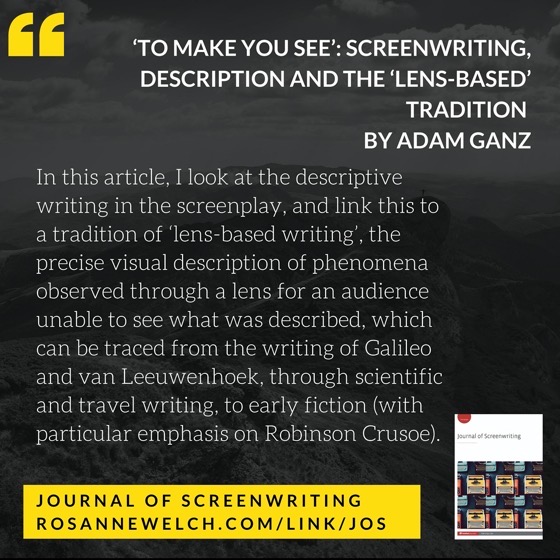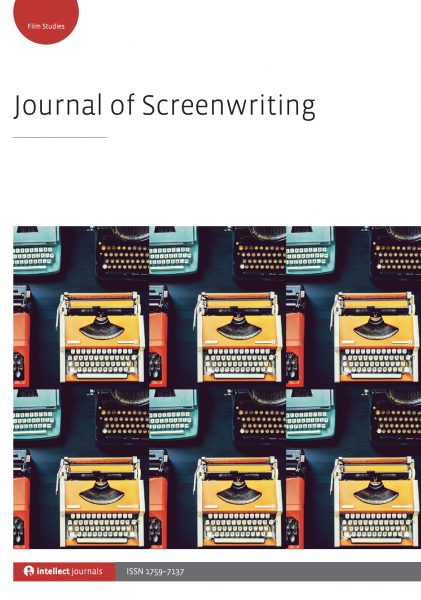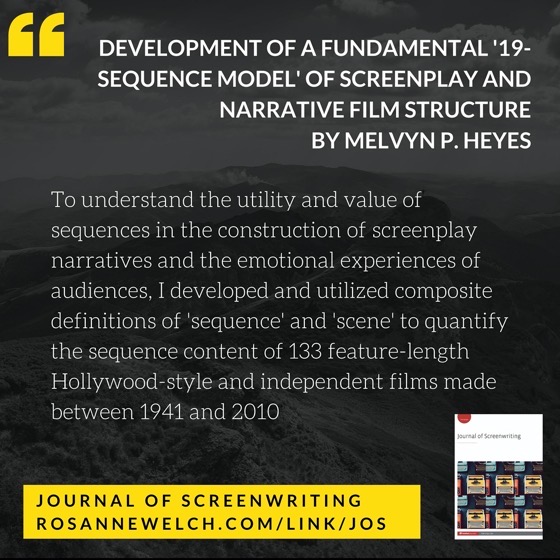Highlighting the articles in the past editions of the Journal of Screenwriting, of which I am the Book Reviews Editor. Hopefully these abstracts will entice you to did a little deeper into the history and future of screenwriting. — Rosanne
‘To make you see’: Screenwriting, description and the ‘lens-based’tradition by Adam Ganz
In this article I look at the descriptive writing in the screenplay, and link this to a tradition of ‘lens-based writing’, the precise visual description of phenomena observed through a lens for an audience unable to see what was described, which can be traced from the writing of Galileo and van Leeuwenhoek, through scientific and travel writing, to early fiction (with particular emphasis on Robinson Crusoe). I identify the most significant features of lens-based writing – the use of simple language and the separation of observation and deduction to communicate what has been seen through a simultaneous act of looking and framing, and show the similarities between this and screenwriting practice. I also make some observations about what this model can offer screenwriting research.
The Journal of Screenwriting is an international double-blind peer-reviewed journal that is published three times a year. The journal highlights current academic and professional thinking about the screenplay and intends to promote, stimulate and bring together current research and contemporary debates around the screenplay whilst encouraging groundbreaking research in an international arena. The journal is discursive, critical, rigorous and engages with issues in a dynamic and developing field, linking academic theory to screenwriting practice.
Get your copy and subscription to the Journal of Screenwriting Today!
* A portion of each sale from Amazon.com directly supports our blogs
** Many of these books may be available from your local library. Check it out!


![Dr. Rosanne Welch Speaks On “An Introduction to the Women of Early TV: There are More Women than Lucy to Love“ for the American Women Writers National Museum [Virtual via Zoom]](https://rosannewelch.com/wp-content/uploads/2021/01/RMW-Rosanne-Signature-for-Web.png)


![Watch Dr. Rosanne Welch on What Is a Western? Interview Series: When Women Wrote Westerns from the Autry Museum of the American West [Video] (27 minutes)](https://rosannewelch.com/wp-content/uploads/2021/01/rmw-autry-interview-w3h-20210122.jpg)
![07 The Monkees Writers Room from There And Back Again: Writing and Developing for American TV [Video] (44 seconds)](https://rosannewelch.com/wp-content/uploads/2021/01/rmw-oxford-brookes-07.png)

![06 Inside The Writers Room from There And Back Again: Writing and Developing for American TV [Video] (43 seconds)](https://rosannewelch.com/wp-content/uploads/2021/01/rmw-oxford-brookes-06.png)

![Drs. Rosanne Welch and Sarah Clark discuss The Monkees “Here Come the Monkees (Pilot)” episode on the Zilch Podcast’s Monkees 101 Series [Audio]](https://rosannewelch.com/wp-content/uploads/2021/01/Zilch161sm.jpg)
![05 Women Writers Matter from There And Back Again: Writing and Developing for American TV [Video] (27 seconds)](https://rosannewelch.com/wp-content/uploads/2021/01/rmw-oxford-brookes-05.png)